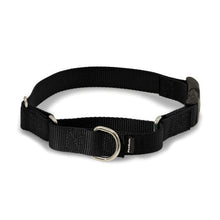Is Physical Correction Necessary In Dog Training?

There's so many kinds and styles of dog training now that it's impossible to keep up. 100 years ago, people followed the teachings of Col. Konrad Most, a German police, military, and seeing eye dog trainer, after he published his book "Dog Training: A Manual", in 1910. Many of his methods would be considered animal abuse today.
Those harsher techniques started to become more motivational, and softer. In 1981, Dr. Helmut Raiser published "Der Schutzhund" and once again revolutionized dog training. "Schutzhund Obedience: Training in Drive" with Gottfried Dildei, by Sheila Booth, 1992 marks the beginning of the current era of dog training where motivation is key, and physical corrections are limited as much as possible, or eliminated all together.

So where are we at now? I would call it the Era of Great Debate. There's no statistical data available, but it seems as though most people today practice what's known as R+. Positive Reinforcement only training. The only negative to the training is withholding reward and telling the dog "No" or having a command that means "You're trying, but that's not quite what I asked for."
The other current state of mind is that you can only ask so much. If you ask a dog to come, or stop pulling, and offer a toy or food as a reward, but they hold chasing a squirrel across the street in higher value than the toy or treat, they'll choose to not listen. And in those instances a physical correction with a training collar may be necessary to teach the dog that following commands isn't optional. But are they necessary?

Yes, no, maybe. That's the best answer we have currently. Animals learn from 4 different types of interaction. Positive punishment, negative punishment, positive reinforcement, and negative reinforcement. This scientific theory is called Operant Conditioning. Positive punishment is adding punishment after a dog (or any other animal) refuses to obey a command. Negative punishment is applying a punishment, asking a dog for a behavior, then taking the punishment away when a command is followed. Positive reinforcement is adding a reward after you give a command that is followed. Negative reinforcement is giving a reward, but taking it away or withholding it if a command isn't followed.
Positive punishment is what we're talking about when we say "Giving a physical correction." It's a "correction" because the dog didn't listen, and we punish the dog for it and offer it a chance to correct it's behavior.

Negative punishment is something rarely used anymore because it's inherently unfair. We punish a dog before we even ask it to do anything, then remove the punishment once we ask the dog to complete a command, and only stop the punishment once they've done what we've asked. It would be like if you were caused discomfort on purpose, then told to do something, but the discomfort continues until you complete the task. Imagine having your arm pinched out of the blue, then being told to sit in a specific chair. Only you continue to be pinched on the arm until the very moment you sit. It will teach you to sit as quickly as possible to make the discomfort stop as quickly as possible. But it's unfair because you were given no option to comply before force was applied.
Positive reinforcement is when you ask a dog to do something, and if he does it, you give him something he wants as a reward. A treat is a strong motivator. Throwing a ball, allowing them to have a release for their prey drive is a strong reward. Playing a game of tug is a strong reward. But only if they have food drive, or prey drive. Some dogs have very little drive for either. In those dogs who don't care for treats or playing, you aren't given much of a choice but to give physical corrections to teach behaviors.

Negative reinforcement is taking a reward away from a dog when you ask them to do something, but they refuse to. An example of this would be taking away a child's video game after you told them to finish their homework before playing the game, but they ignored you and continued to play the game. They have a reward they want, but don't obey a command, so you take away the reward or withhold it. Imagine you have a dog who loves to play tug, and you ask him to sit, but instead he lays down. In response, you refuse to play tug with him until he sits. A dog who is motivated to play tug will begin to think and try to fix the situation to make you happy so you'll give him the reward.
Now that we understand the 4 ways to teach an animal, is it possible to use nothing but positive and negative reward to fully train a dog who obeys 100% of the time? I didn't used to believe so, but I think it is possible, if you have an extremely motivated dog who holds working with you higher than anything else. These dogs are rare, and are very specifically targeted by R+ trainers who compete in obedience or protection sports at the highest levels. I do not believe it will work for every dog. In fact, I don't believe it'll work for most dogs. Most dogs don't love playing tug, chasing a ball, or food enough to listen every time you give them a command, to receive those rewards.

I believe that most dogs, in some situations, will choose to ignore a command when in a position that they would prefer to do something else, more than they would prefer to receive a reward. And in those cases, a physical correction with a leash and training collar exists. It's the reason prong, martingale, choke, and fur saver collars exist. If you teach a dog what you want him to do using rewards, and he chooses not to obey, your choices are limited in getting him to comply, except to make it not worth whatever reward the dog has assigned to not obeying. If a dog's favorite thing is to bark aggressively at other dogs on walks, but it dislikes being corrected more than it likes to bark aggressively at other dogs on walks, and he knows you'll correct him for barking at other dogs on walks: He will cease to bark at other dogs on walks. Simple math and common sense.
So are physical corrections necessary? No, not really. Not for all dogs. But if you want or need a dog to comply with every command, who isn't that type of dog, which is rare, then yes. To train a dog who listens every time you give a command, they must want to, and also know that they will be punished for not listening. They have twice the motivation to obey. They know they'll get rewarded to obey, and they know that if they don't, there will be consequences.

Do you agree with this theory? If not, why not? If you do, why? Leave a comment and let us know.
You may also like: How, When, And Why To Correct A Dog
























